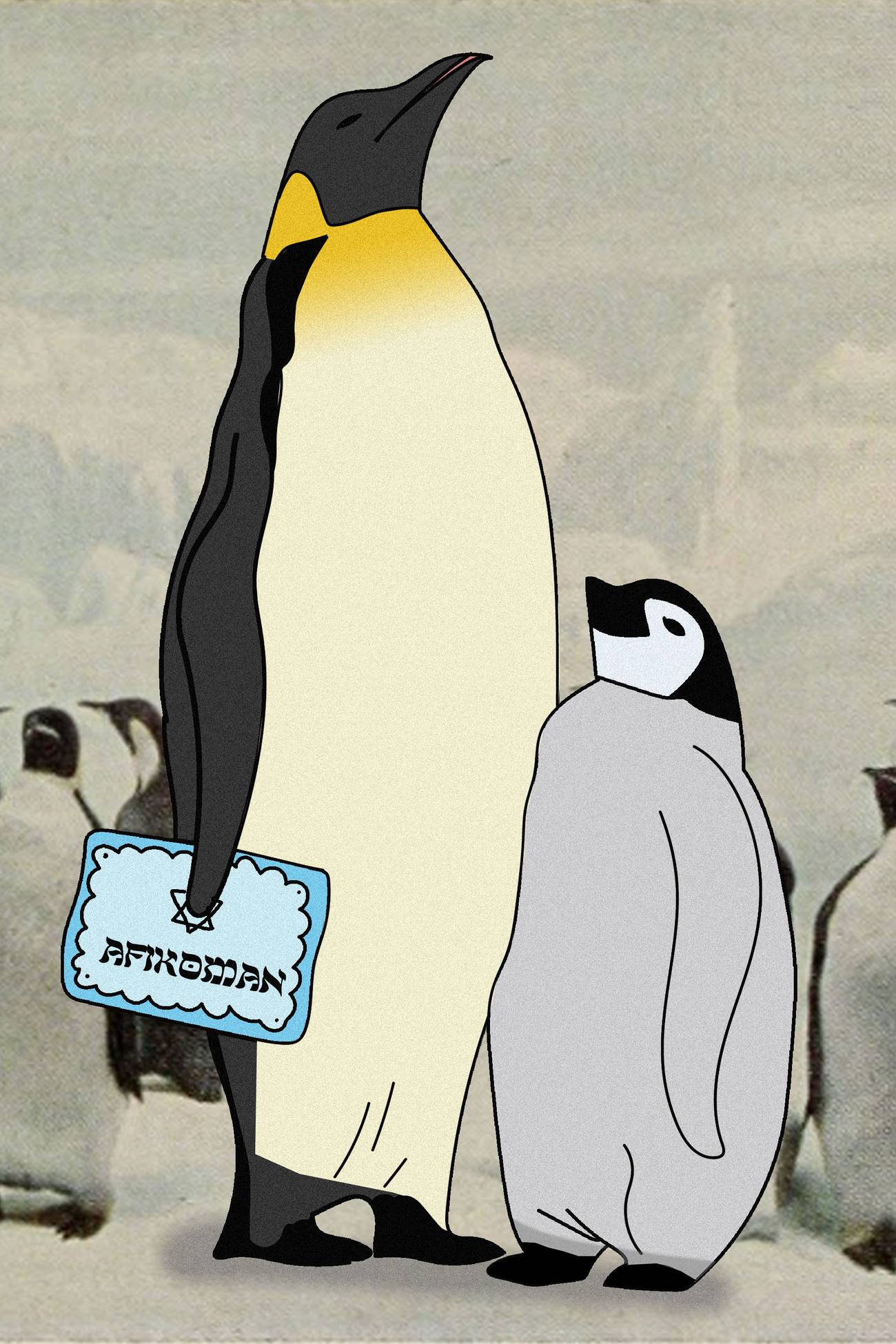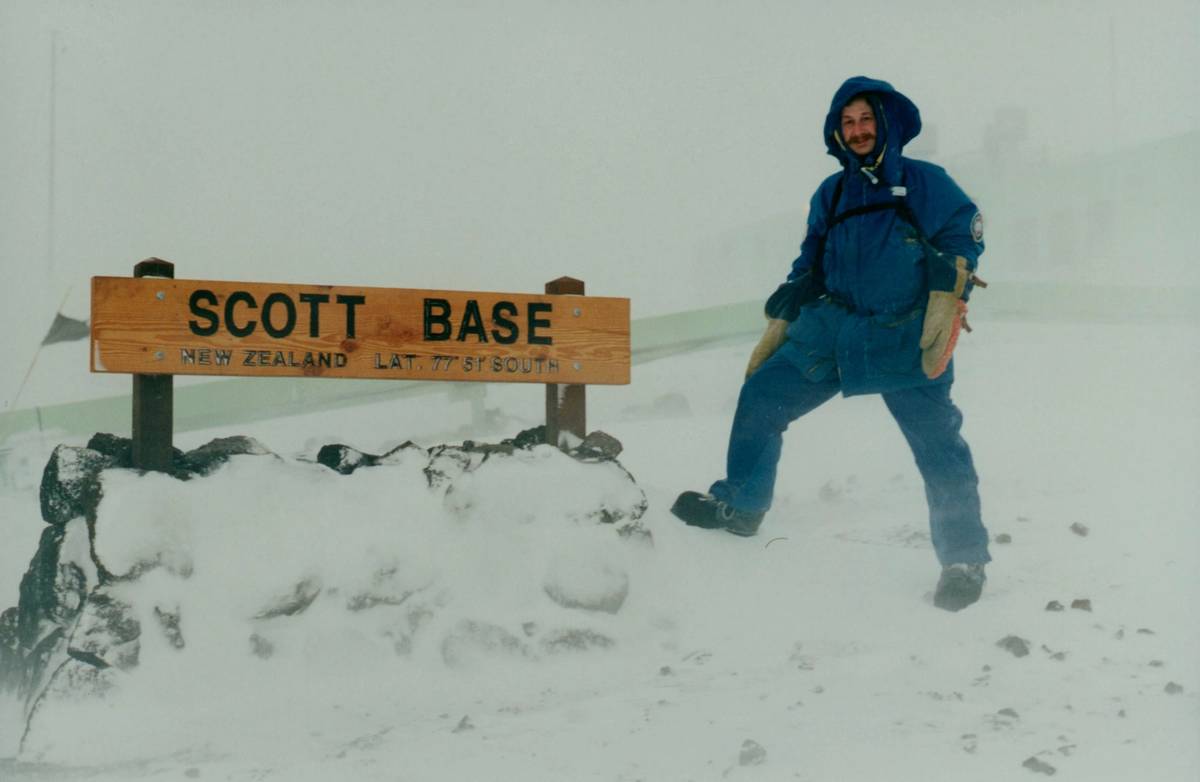Spending the Seder in Antarctica
How one scientist celebrated one wintry Passover at the bottom of the world, 25 years ago




In 1995, David Hornstein, a Jewish environmental scientist originally from Australia, was living and working for IBM in Christchurch, New Zealand. He happened across an advertisement in a local newspaper seeking people to join New Zealand’s scientific mission to Antarctica. “I was immediately drawn to the ad and decided that I would apply to join the scientific team,” Hornstein told me recently.
The position was located at Scott Base, New Zealand’s Antarctic research facility, more than 2,300 miles from Christchurch. Hornstein was successful in his application and along with nine others was offered a one-year contract to live and work on Scott Base as a science technician. He arrived in Antarctica in September 1995 and immediately got to work. “As part of my role I got to undertake amazing scientific experiments including measuring ozone levels in the atmosphere, collecting atmospheric gases for analysis in New Zealand, radar experiments, and looking at seismic waves going through the Earth,” said Hornstein.
But Hornstein, who grew up in a traditional home, still wanted to observe Jewish holidays—which involved overcoming certain obstacles. For instance, the sun doesn’t set for six months in Antarctica, so Hornstein wasn’t sure when to observe Shabbat or other festivals that begin at sunset. (Rabbi Yosef Yitzchak Kazen, a New York City-based Chabad rabbi best known for setting up the website Chabad.org, advised Hornstein to follow festival times based on the city he’d come from most recently: Christchurch.)

But it was Passover in 1996 that posed the thorniest problem: During the Antarctic winter, which lasts from February to October, the average temperature plummets to between minus 2 and minus 40 degrees Fahrenheit—too cold for planes to fly. So, for six months of the year, no flights can come or go. Knowing that Passover would fall during the Antarctic winter, Hornstein was still determined to celebrate on Scott Base. “I wanted to celebrate Passover … like my parents celebrate Passover,” he said, “by having a traditional Orthodox Seder.”
Hornstein contacted some of his friends in Melbourne, asking for help in obtaining appropriate Passover supplies. Aided by financial support from Melbourne Chabad Jewish philanthropist Rabbi Joseph Gutnick, matzo and wine were shipped from Melbourne to Christchurch.
“In our prayers on Rosh Hashanah we say God remembers all the good deeds we have forgotten,” Gutnick told me, noting that this can also refer to “all the people that are forgotten about in faraway places.”
Once a month, a U.S. Navy C-130 Hercules military helicopter delivers packages from Christchurch to Scott Base. “On the last flight out before the Antarctic winter began,” said Hornstein, “were the supplies for my Passover Seder, including matzo and wine.”
The New Zealand Antarctic scientific base is located about two miles from McMurdo Station, one of three American Antarctic scientific bases. While the American base usually has 150 to 250 people living on it over Antarctic winter, New Zealand’s base usually only hosts 10 to 20 people over the winter months. While there was one other known Jewish person on the American base who was invited to join the only known Seder in Antarctica that year, they were unable to join Hornstein.
“This did not matter though,” said Hornstein, “as all my colleagues on New Zealand’s scientific base were very respectful and interested in undertaking the Seder with me and learning about Jewish traditions, including one particularly devout Christian who was enthralled with the idea of celebrating Passover in Antarctica.”
Hornstein’s journal from 1996 records his preparations for the Seder: “There we were: all 10 of us in the Scott Base Bar … the Navy Chaplain had ordered kosher food just for this occasion, I had two chickens, some livers, and heaps of canned matzo ball soup, so I had made chopped liver, chicken soup and matzo balls …just for the occasion.”
With preparations for the Seder set, Hornsten recalls a particularly impressive feature of his Antarctic Seder: opening the door for the prophet Elijah.
“We went to open the door of the New Zealand scientific base during the Seder to welcome Elijah the Prophet,” he said. “It was about 75 degrees Fahrenheit inside the base, but outside it was absolutely freezing and when we opened the door, the outdoor temperatures caused sheets of white mist to fly into the room in front of all my colleagues. I can assure you that we were the only ones in the world that year that invited Elijah to visit an Antarctic Seder!”
Twenty-five years later, Hornstein recalls his holiday in Antarctica fondly: “I can assure you that my Seder experience in Antarctica was one of the most meaningful Passover experiences I have ever had.”
Nomi Kaltmann is Tablet magazine’s Australian correspondent. Follow her on Twitter @NomiKal.